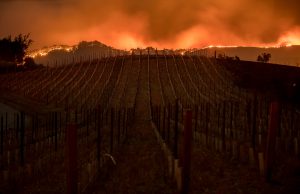Currently
At present countries in Eastern Europe such as Romania, Moldova and Bulgaria are making a significant comeback in the world stage of wine production.
The regions have in the past been somewhat major exporters of wine to other parts of Europe specifically to the East and the former Soviet Union with somewhat limited world exports elsewhere and after the major challenges caused by the Soviet Union re-entering the Western export market seemed to be challenging since by then the Australia and to a lesser degree Chile explosions had risen so fast that these countries had challenges in both going against large trends from these countries while trying to repair their global perception of past years.
In this article, we will examine the state of wine production in Romania, Moldova and Bulgaria highlighting how these countries were able to revive the winemaking industries over time.
State of affairs of wine production in Romania: Winemaking in Romania is reckoned to be as old as 2,800 years when the Agathyrsi that lived in the region at that time were known for their vineyards. The earliest challenges winemakers in Romania faced was from a Dacian king who decided to grab vineyards in the winemaking regions of Romania for himself which effected several centuries.
The Romanian wine production industry also had to survive the phylloxera attack of the 19th century that swept through most of the European vineyards. During this period, wine from foreign countries such as France was imported into Romania, and these led to the popularity of wines such as Chardonnay and Pino Noir. This was well before communism took its toll on the industry. When Communism arrived the biggest battle against the wine industry in Romania became the fact that the industry came under the government control which held tight every process involved in winemaking from how the farms were run to how grapes were harvested and all of these were for the purposes of caring for the Soviet Union’s needs which did not lie in quality production.
Faced with major challenges after the fall of communism, the process of rebuilding the wine industry of Romania started quite slowly with efforts such as complete replanting. By 2007, as a member of the EU, Romania was able to receive the help needed to revive the industry. Romania is currently the sixth-biggest wine producer in the world. The International Organization of Vine and Wine (OIV) has predicted a steady growth of the Romanian winemaking industry and estimated an average of 5.2 million hectoliters produced in 2018. The increase in production of wine in Romania has also made exporting Romania wine to the UK and other parts of the world possible primarily as quality became now the norm. Although Romania is situated between Central and Eastern Europe, its wine production has been majorly influenced by Eastern Europe in the past.
Some of the major wineries in Romania that have consistently produced some of the best Romanian wines and lead by example through quality which will hopefully help the county at large can be seen by examples from Avincis, Rotenberg and Prince Stirbey amongst others and particularly using Western/French cultivars primarily such as Sauvignon Blanc, Merlot and many others of the usual suspects.
State of affairs of wine production in Moldova: With three regions where wine is heavily produced and about 112 thousand hectares of vineyard, Moldova is a major producer of wine in the South-eastern Europe region with vineyards that are located in the Black Sea basin. Moldova is a rather large producer of wine for such a small country with red wine produced in the regions in the south and white wine produced in the central regions. Winemaking started in Moldova about 5,000 years ago, and despite the challenges which the industry has faced over time, it has remained a major contributor to the country’s GDP.
The wine industry of Moldova was not left out of the challenge of the World War I and World War II. Vineyards and wineries were heavily destroyed during this period, but the industry recovered efficiently from those challenges. After World War II, Moldova became the biggest wine producer in the Soviet Union. The Moldovan wine production industry, however, encountered another challenge, the Promoted Alcohol Prevention Campaign. After leaving the Soviet Union, the process of recovery of the Moldovan wine production industry that has continued till this date started with the privatization of a lot of the wineries. About 30,000 hectares of new vine plantations have been cultivated in Moldova in the recent years in an attempt to go towards quality production.
About 80% of the wine currently produced in Moldova are exported with the major destinations being the Ukraine, USA and Poland. Currently, the Moldovan wine production industry is poised for growth and international reach with major private investments in the industry. Blended wines have been a particular focus of the industry. The indigenous Moldovan grape varieties include Festeasca Alba, Plavai and Rara Neagra. There are about 140 wine companies in Moldova, and about 250,000 people from Romania that are employed by the Moldovan winemaking industry.
State of affairs of wine production in Bulgaria: The Bulgarian wine production industry also has quite a history as well as similar past challenges as Romania and Moldova although with its own slight variations. The Bulgarian winemaking history has been traced back to the Thracians who saw wine as a favorite drink and a way of connecting to their ancestors. The Thracians produced wine in Bulgaria as far back as 4,000 BCE. The winemaking culture of Bulgaria was preserved through centuries until the 20th century when the industry had a major boom.
In the 1970’s, Bulgaria was especially well known for its winemaking industry with exports all over the world with the former Soviet Union and the Eastern Bloc being large destinations as well. In the 1990’s, the industry experienced a major decline after the fall of Communism. Winemaking in Bulgaria has, however, been notable, particularly since the country joined the EU and got access to the required resources for revitalizing the industry. Bulgarian wines are currently some of the most awarded wines in Europe.
Bulgaria has five major wine regions with the Thracian valley wine region being the home of the most wineries. It should be noted the EU has recently redrawn the Bulgarian wine regions into two only however the Bulgarian wine industry is not only balking at this but based on their belief in their Terroir they are internally pushing to further divide the country into 8 regions from the unofficial 5 regions. This means that if they continue in this path, a clash with the EU could be around the corner although some signs point to them concentrating on sales outside of the EU which may make this issue a moot one. Nevertheless, this is a developing subject that people need to be on the lookout for. As well as international varietals, there are also at present 44 indigenous grape varieties so far identified in Bulgaria; these include both red and white varietals. The most well-known and currently showing the best results are Mavrud, Dimyat and Rubin. The winemaking industry in Bulgaria has about 260 wine producers. These wine producers include boutique wineries that have promoted wine tourism in Bulgaria.
Finally, having withstood the challenges, the winemaking cultures of Romania, Moldova and Bulgaria have been preserved over the years despite its many disruptions and appear currently to turning their new found quality practices and aiming towards global recognition.







